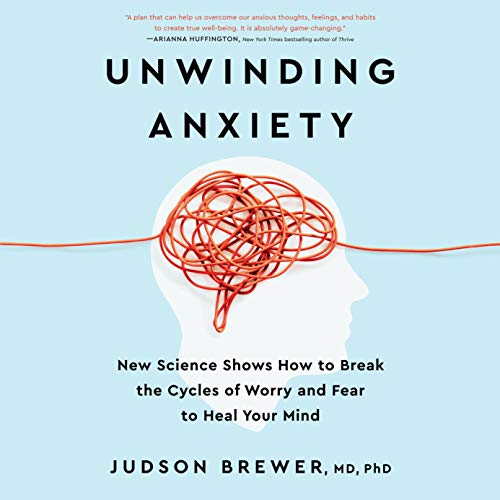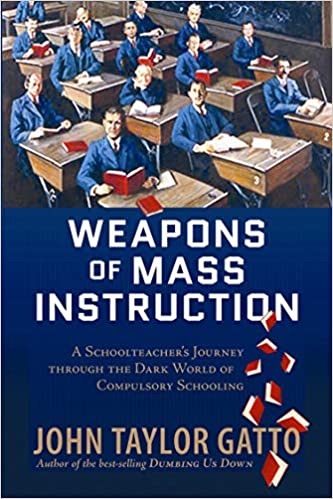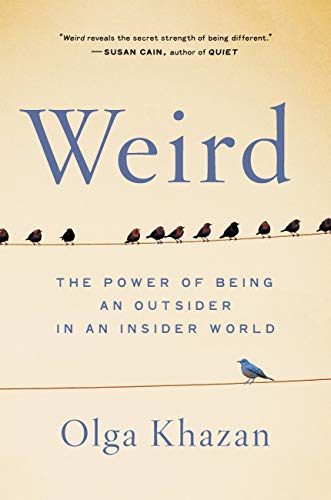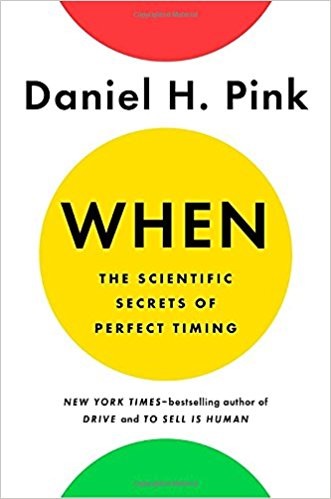Archive for the ‘Book Summaries’ Category
Friday, November 24th, 2023
Unwinding Anxiety: New Science Shows How to Break the Cycles of Worry and Fear to Heal Your Mind by Judson Brewer offers actionable advice for anyone who suffers from anxiety. There is also a free app available that can further help make your life less stressful. Learn how you can use curiosity and kindness to your advantage. While I don’t suffer from anxiety, I know many people who do. If you are anxious, you need this book. It also makes a great gift for anxious friends and family. Thanks, Jud.
Introduction
- Judson has MD and PhD degrees which took eight years to complete. He then went on to a career as a psychiatrist doing research on anxiety. He found that anxiety is in and of itself a harmful habit. It hides in peoples’ bad habits and feeds other behaviors. When he realized this, due in part to his own panic attacks as a student, he was determined to “science the hell out of it,” to cite a Matt Damon quote from The Martian. During the last decade, his research has lead to excellent results in helping people quit smoking, overeating, and other bad habits with the help of smartphone apps. This book is intended to be a useful pragmatic guide to changing how you understand anxiety so that you can work with it effectively, and as a bonus, break your unhelpful habits and addictions.
Part 0 Understanding Your Mind: The Psychology and Neuroscience of Anxiety
1. Anxiety Goes Viral
- Anxiety is a feeling of worry, nervousness, or unease, typically about an imminent event or something with an uncertain outcome. Generalized Anxiety Disorder (GAD) is experienced by people who generally worry throughout the day. This usually results in poor sleeping habits. Other symptoms include edginess, restlessness, tiring easily, impaired concentration, irritability, and increased muscle aches. Specific phobias and obsessive-compulsive disorder also fall under anxiety diagnoses.
- Anxious parents are likely to have anxious kids. Uncertainty and lack of structure cause anxiety for many. It is tricky to diagnose as most people experience it to some degree. Worries about health, safety, finances, politics, and relationships are the top sources. COVID-19 has certainly added to our collective stress. People with GAD usually also suffer from depression or something else.
2. The Birth of Anxiety
- Anxiety and its close cousin panic are both born from fear. Ironically, fear’s main evolutionary function is helping us survive. Being afraid of dangerous situations and doing something about it is a good thing. The pre-frontal cortex (PFC) portion of our brain is where future scenarios get played out. It thinks slower than the reflexive part of our brain. When it doesn’t have enough information to predict the future it may start working on worst-case scenarios causing anxiety.
- Fear is an adaptive learning mechanism. Anxiety is maladaptive. Fear + Uncertainly = Anxiety. Without past experience or accurate information, it’s easy to turn on the worry switch. This is why fake news, which travels faster than real news, promotes anxiety. Our news media is more likely to give us stories that feed our anxiety than those that make us feel good. (Doug: If the news you watch makes you anxious, consider not watching it.) Anxiety is also contagious. Knowing this and that uncertainty triggers anxiety can help put you more at ease. It is possible to replace old habits like worry with habits that are more rewarding so stay tuned.
3. Habits and Everyday Addictions
- Most of us are addicted to something as addictions are not limited to things like hard drugs, alcohol, and tobacco. Compulsive behaviors like shopping and overeating also fall into this category. Our modern world has increased the likelihood of addictive habits as just about anything is much more available. The goal of the media is to increase clicks and eyeballs. Therefore they design not to inform, but to create addictive experiences. This starts with a Trigger, which is a thought or emotion. Next comes a Behavior like worrying. Finally, we have a Result or Reward such as avoidance or overplanning. Reinforcements and immediate availability are a dangerous formula for modern-day habits and addictions. This is how our brains work and this is important knowledge.
4. Anxiety as a Habit Loop
- Anxiety can act as a trigger that leads to the behavior of worrying. The result of this behavior can be feeling more anxious. That is the loop or cycle. While worrying usually doesn’t work, this doesn’t stop our brain from trying it again and again. Being aware of this is a good place to start. Judson and his team developed an app (Unwinding Anxiety) that they use to teach mindfulness to the subjects of their research. You can get a free trial or pay for the complete program. They used this app on doctors who do not get training on how to handle their emotions in medical school and found success with 63% of their subjects. First, you need to map out your anxiety. Then you tap into your brain’s reward system before you tap into your own neural capacities to step away from anxiety-producing habits.
Posted in Book Summaries, Business Books, Education Books, Leadership Books | Comments Off on Unwinding Anxiety: New Science Shows How to Break the Cycles of Worry and Fear to Heal Your Mind by Judson Brewer
Monday, April 6th, 2020
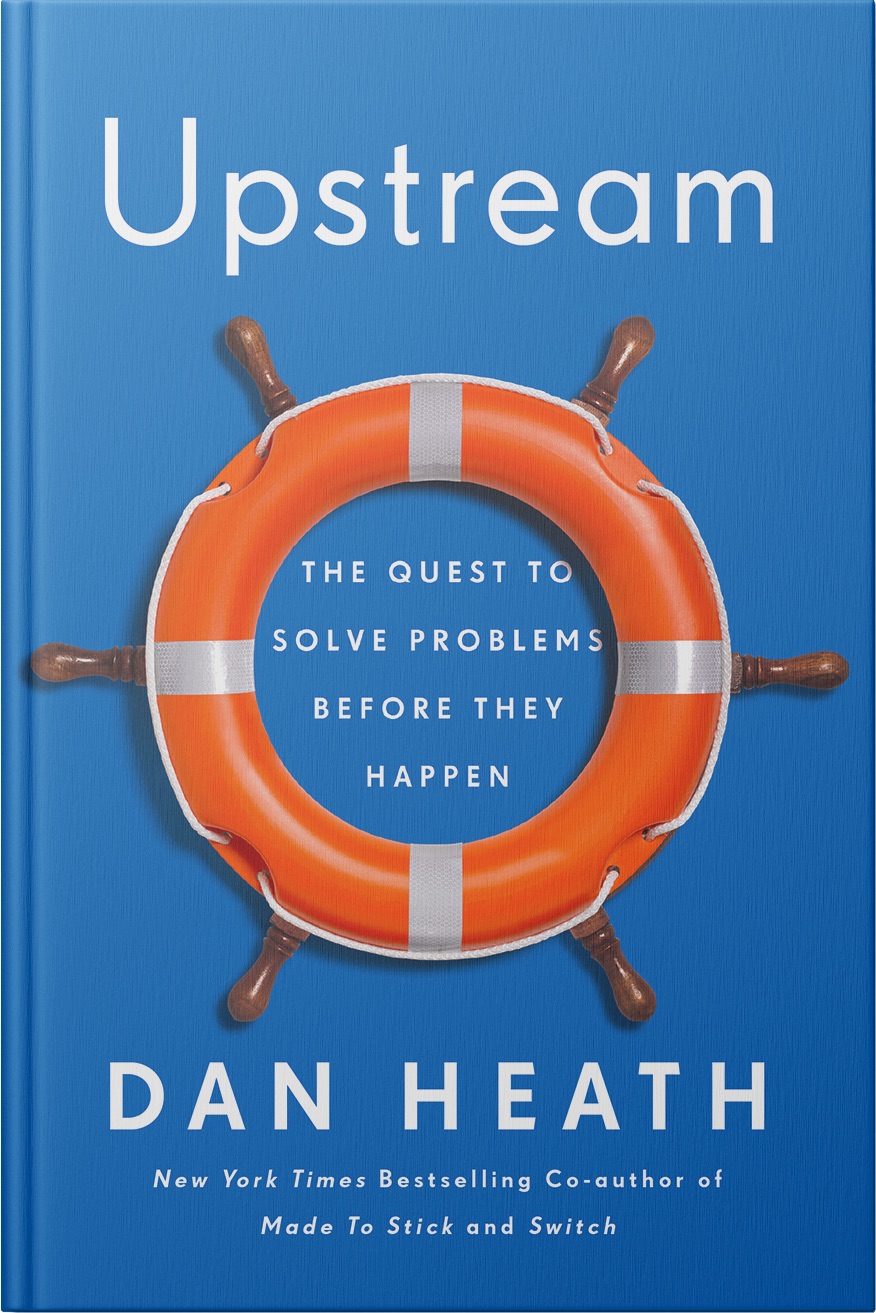
Upstream: How to Solve Problems Before They Happen by Dan Heath deals with the notion of preventing problems before they happen rather than being stuck with constantly fixing things after they break. He discusses barriers to Upstream thinking and offers questions Upstream leaders need to address. Whether you are a leader in your organization or just an ordinary individual trying to reduce stress and live a happier life, this book is a must.
1. Moving Upstream
- The book starts with a parable about two men rescuing drowning children who one after another come past them in a river. When one man stops the effort to head Upstream his friend asks what he is doing. The man says that he is going Upstream to tackle the man who is throwing the kids into the river. The key point is that Upstream efforts are aimed at preventing problems while Downstream efforts react to problems once they’ve occurred.
- An example is Expedia’s 58% call support rate. When they looked at the problem they found that none of their teams were judged on this number. Once they looked at the reasons for the calls it was easy to lower the rate to 15%. Another example compares one police officer who stands on the corner causing people to slow down and preventing accidents to another who hides and gives out tickets. Dan sees health care as one area where the US needs to shift to more Upstream efforts as other developed countries have done. The general goal in this book, therefore, is that we should all shift more of our energies Upstream.
Section 1 – The Three Barriers to Upstream Thinking
2. Problem Blindness
- Problem blindness happens when we believe that negative outcomes are natural and unavoidable. A successful example of fighting this problem happened in the Chicago Public Schools where the graduation rate in 1998 was 53%. They found that the key to graduation was a successful freshman year and a program to attack this problem was put in place. It involved teachers getting to know individual students better, giving more support, and collaborating with each other to help students in need. By 2018 the graduation rate had risen to 78%.
- Sometimes we miss problems because we focus on one thing and miss a problem in our peripheral vision. In the 1960s and 1970s, sexual harassment had been normalized in the workplace to the extent that women were encouraged to embrace it. In 1975 a journalist coined the term sexual harassment. Now that the problem had a name demanding a solution was an implied obligation.
- Another example relates to the extensive use of C-sections for child delivery in Brazil. They increased as they were convenient since they could be scheduled and they resulted in more money for the doctors. They also resulted in more babies ending up in intensive care as they were born sooner than necessary. Thanks to one woman and one doctor who saw the problem and took action, the C-section percentage is now coming way down.
3. A Lack of Ownership
- An example of this issue goes back to the Chicago Public Schools with its dismal graduation rate. It got that way because the adults saw it as the kids’ problem. It was greatly improved when the adults decided to make it their problem. There is a story here about a man who owned a carpet business. When he read about our environmental problems he decided to see what he could do. He motivated everyone in the company to look for ways to do things like recycling old carpets. When a doctor in Tennessee found out that more kids died inside cars than outside cars he went to work in 1976 on legislation requiring car seats for kids. By 1985 all 50 states had car seat laws. In short, upstream work is generally chosen rather than demanded. If you find yourself saying “it’s not my problem,” you are likely living downstream.
4. Tunneling
- When you are reacting to problems it can be like you are in a tunnel just digging forward. You don’t have time to step back and take a system-wide look at why the problem exists. Such time would be slack time and it is smart to build slack time for system thinking into your schedule. Poverty tends to cause more tunneling as it reduces bandwidth and causes stress. People who aren’t poor can solve some of their problems with money, which leaves more resources for the problems that money can’t solve. Dan gives examples of situations where tunneling gets in the way of upstream problem-solving.
Posted in Book Summaries, Business Books, Education Books, Leadership Books | Comments Off on Upstream: How to Solve Problems Before They Happen by Dan Heath
Friday, May 5th, 2023
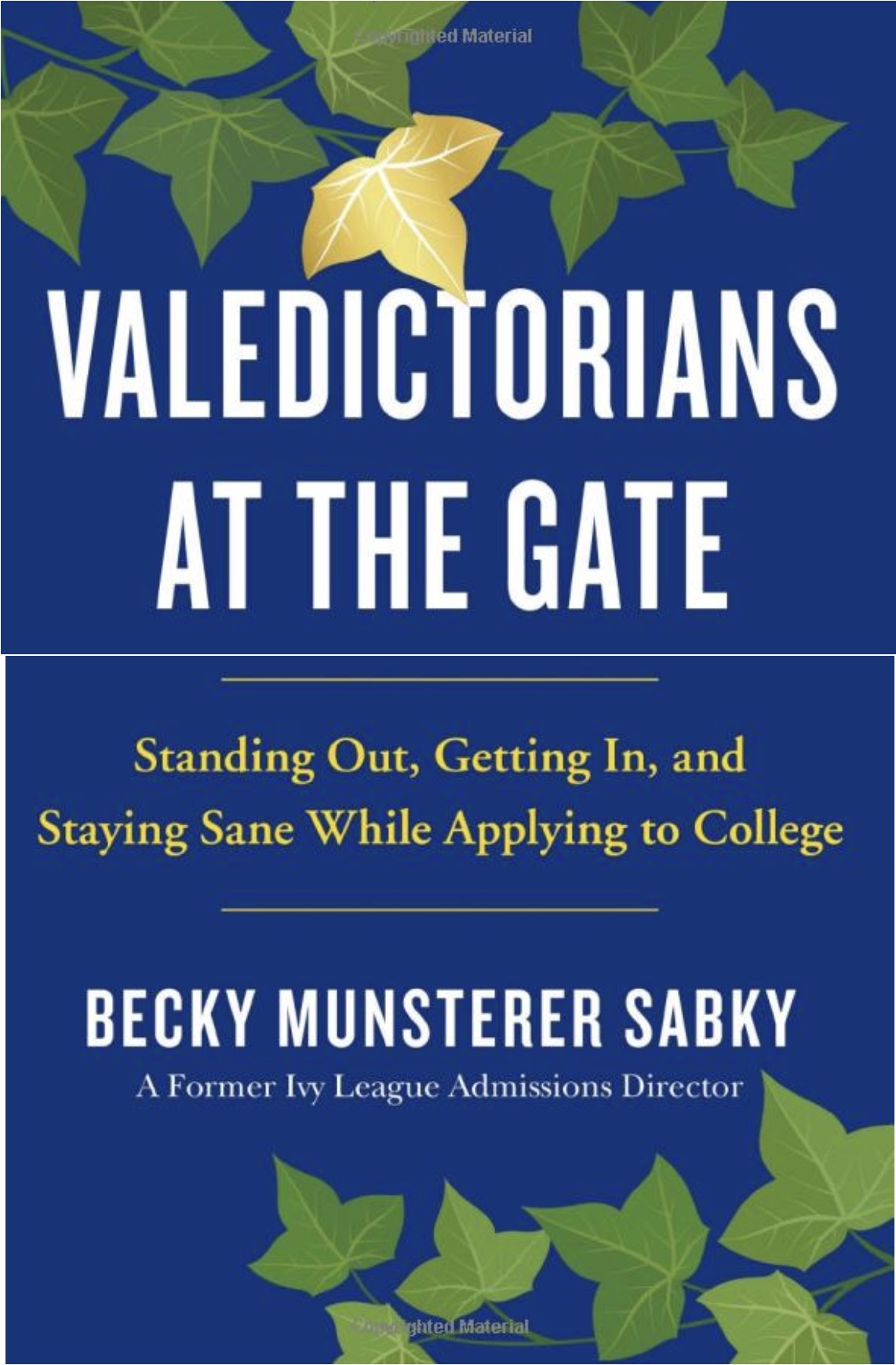
Valedictorians at the Gate: Standing Out, Getting In, and Staying Sane While Applying to College by Becky Munsterer Sabky is a must-read for high school students and their parents. It takes you behind the scenes of the crazy process of college admissions as it explains the value of character, being thorough, and staying curious. I’ve summarized over 200 books since I started in 2009, and I can’t say I have enjoyed any of them more than this. Congratulations, Becky, and thanks.
Preface
- Becky’s experience includes two years in the Saint Lawrence admissions office, followed by thirteen at Dartmouth, which is one of the so-called elite Ivy League schools. She was crushed when Dartmouth rejected her but had many valuable experiences at Colby College, her alma mater. She even picked up a master’s degree from Dartmouth.
- All this gives her sufficient expertise to write this advice book about applying, not competing, to college. This book will help students value open windows rather than obsessing about closed doors. If you are looking for financial aid advice, don’t look here. This is all about finding the college that is right for you, creating your best application, and getting off to a good start.
1. The Big Picture
- College admissions is a business that first does what is good for the college. Students must first have sufficient academic skills to make the grade, but they need something more that makes them stand out at selective schools. Diversity is a big deal today, and there is nothing you can do to change your race, ethnicity, or poverty status. (Doug: you can at least pretend to change your gender, so being trans is probably a plus at many schools). Even if you are a white guy, you can appear somewhat diverse if you have special skills or qualities.
- If you have family members who attended college, consider applying where they went as a legacy. Your chances of admission go way up. It may also help if you are from somewhere in the US where other students aren’t applying; think North Dakota. If your parents are wealthy, be sure to contact the development office. (Doug: From my experience writing student recommendations, I know that the quality of teacher and counselor recommendations is a big deal. I once got a letter from Princeton telling me how my letter led to a student’s acceptance. In my case, I wrote my daughter’s recommendation and emailed it to her counselor, who put his name on it and sent it in.)
The College Search
2. First Steps
- The big idea is to make the most of high school. When you are a senior, it’s too late to develop good writing skills that will make college applications much easier. Take challenging courses, but don’t go overboard. You need to have time to do other things. It doesn’t matter if you pick up a paintbrush, an oar, or a trumpet as long as you do something beyond your high school coursework.
- Familiarize yourself with the resources in the guidance office during your freshman year. These resources are often underutilized. Familiarize yourself with the entire course offerings at your school and note which ones have prerequisites. At some point, find out if the colleges you are interested in accept the common application.
3. Creating the Right College List
- Apply to as many schools as you can reasonably visit. Check college test scores/admissions data to help gauge your probability of being accepted. Ideally, you will only apply to schools that you feel excited about, so do your homework and get excited.
- Many colleges offer price calculators online that will allow you to estimate out-of-pocket expenses. Ask your counselors, teachers, and trusted family and friends for advice. (Doug: I advise knowing what you want to major in first. If you decide after year one, you may be unable to take all the courses you need to finish in four years. Most of the people I know who switched majors took an extra year.
Posted in Book Summaries, Education Books | Comments Off on Valedictorians at the Gate: Standing Out, Getting In, and Staying Sane While Applying to College by Becky Munsterer Sabky
Friday, March 22nd, 2024
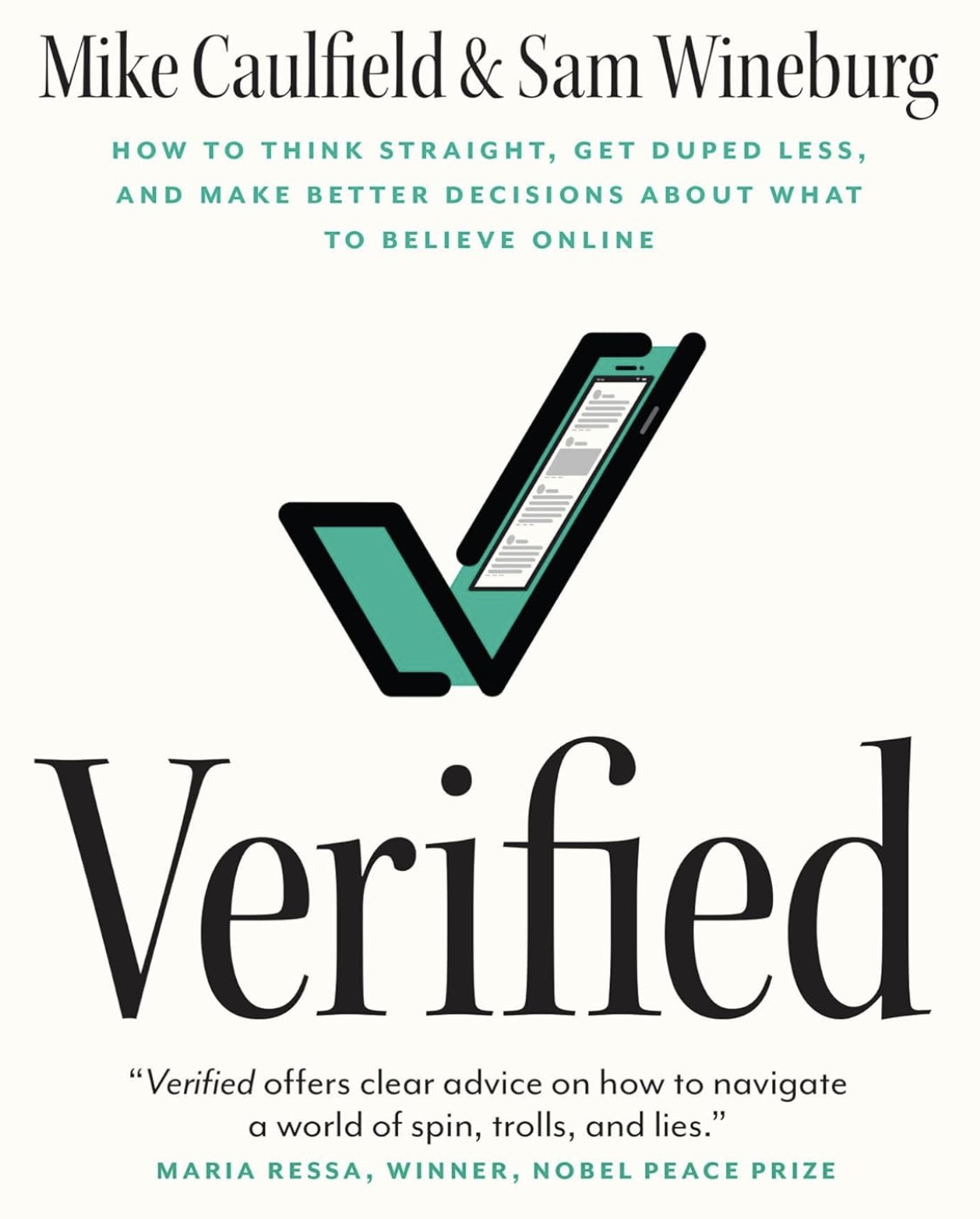
Verified: How to Think Straight, Get Duped Less, and Make Better Decisions About What to Believe Online by Mike Caulfield and Sam Wineburg should be the textbook for any course in high school and college that deals with verifying information on the Internet. Its lessons are easy to absorb and remember, which means that it lives up to its lofty title. Get your copy today.
Introduction
- Prior to the arrival of the Internet, the information we received was already processed by society’s gatekeepers and niche information was seldom available. The Internet was supposed to change all that. While we know that much of what we find on the Internet is false, the skills we inherited from the pre-Internet age are not much use in separating truth from fiction. This well researched book may not protect you from all errors of judgement, but it should make such errors fewer and farther between.
1. Get Quick Context: It Can Take as Little as Thirty Seconds, Seriously!
- Most hoaxes can be quickly disposed of with a simple Internet news search. As you face claims of fact there are three contexts that you should consider. They are the source, the claim itself, and your own level of expertise on the matter. As you reason about a specific piece of content there are certain things to do that involve the acronym SIFT. The first is STOP and ask what you know about the claim. Next INVESTIGATE the source to see if it’s trustworthy. Proceed to FIND other coverage. Finally, if possible, TRACE the claim to its original source. The authors give several examples and warn that just because a claim seems far fetched doesn’t mean that it is.
2. Cheap Signals: Or, How Not to Get Duped
- A cheap signal is one that costs little or nothing and is easy for any con artist to produce. Just because a website has a snazzy look and is well written means nothing. Some legitimate sites may not look totally professional. CRAAP is an acronym for the things you should consider as you evaluate a site. Currency deals with when the content was posted. Relevance deals with how the topic fits with what you are looking for. Authority deals with the credentials of the author. Accuracy means you can verify the information with another source. Purpose deals with the aim of the organization publishing the site.
- Even if a site passes all five CRAAP tests, it still may be a front for an industry promoting its products. It may be a wolf in sheep’s clothing. You should always read the URL of any new site you visit. It can help you spot imposters. The suffixes are important. Dot-com sites are supposed to be commercial and usually try to sell you something, but that is not always the case. (Doug: My site is a dot-com but I’m just providing free resources like this summary.) Dot-orgs are supposed to be non-profit organizations, but beware. Pretty much anyone can get a dot-org site. Also, beware of data bases where anyone can add a record.
3. Google: The Bestie You Thought You Knew
- In 2014 Google started putting descriptive search results at the top of the results page. They called it a featured snippet. Google says that they create the snippets from trusted sites based on the keywords in your search. They are very helpful when things are clear, but may not be when things are vague or complex. The keywords you select are important and you usually need several good ones in a search to get good results. Featured snippets may not provide the best answer.
- Google is not neutral. It tries to give you what you want. Try to avoid searches that broadcast your preferences. Choose neutral search terms that don’t contain words like good or bad. Try searching “are soda taxes a good idea” and “are soda taxes a bad idea” as a example of how this works.
Posted in Book Summaries, Business Books, Education Books, Leadership Books | Comments Off on Verified – Book Summary
Sunday, May 23rd, 2021
Weapons of Mass Instruction: A Schoolteacher’s Journey Through the Dark World of Compulsory Schooling by John Taylor Gatto explains how the “Germain” system of schooling adopted in the US was designed to produce docile factory workers and not original thinkers. As you read this important book reflect on how your schooling and the current schools in your community use the weapons of mass instruction John describes.
Prologue: Against School
- John’s experience shows that the main theme in secondary schools in the US is boredom. This can be traced back to our school’s Prussian heritage which offered a design aimed at producing mediocre intellects that would ensure a population composed mostly of docile and incomplete citizens. In other words, a manageable population. This type of schooling precludes critical thinking and strives to make children compliant and as alike as possible. At some point, they get sorted into manual labor and college tracks. The unfit are tagged with bad grades, remedial placements, and other punishments.
- Not only are students designed to engage in mass production, it’s vital that they also engage in mass consumption of things they may not need. They are sitting ducks for the folks in marketing. The good news is that once you discover the tricks and traps of modern schooling, they are easy to avoid. This book promises to help you do just that.
1. Everything You Know About School is Wrong
- This chapter focuses on the history of American schools. Prior to the school for all movement of the mid 19th century, children were included in family work, thinking, and inventing. Education was open-sourced and goals included self-reliance, ingenuity, courage, competence, and other frontier virtues. As students in factory schools, they became consumers of facts rather than producers of anything. While original thinking was patronized at times, it was subtly discouraged. There was also the beginning of the shift from local control to federal influence as school districts became larger, more bureaucratic, and less efficient.
2. Walkabout: London
- Here we are introduced to the concept of open-source learning. This is the learning that happens outside of schools when individuals decide for themselves what they want to learn and who they want to learn it from. This chapter tells the stories of many people who became very successful without college degrees. Some dropped out of college. Some never spent a day in college, and some are even high school dropouts. It seems that for many passionate and driven people, school as we know it only gets in the way.
- In the US 1.25 million students drop out each year. This takes courage and we should help these kids learn what they want to learn rather than giving up on them. Many students who do go to college end up learning little or nothing and end up with a huge debt and a grim career outlook. Perhaps more students should intentionally take up open-source learning rather than going to college. While John went to two Ivy League schools, he finds that most of what he learned that mattered happened outside of school. He also revisits the role schools play in standardizing students so they can serve corporate needs.
3. Fat Stanley and the Lancaster Amish
- Stanley was one of John’s students with an attendance problem. What John discovered was that he was skipping school to in turn work for free for five relatives who had their own businesses. He wanted to learn how to run a business so he could be running his own by the time he was 21. Once John knew this he started reporting Stanly as present as he knew that Stanley was learning more than John could teach him in school.
- We then look at the Amish with a focus on their values. While they never attend high school, they are successful entrepreneurs. They are innovative, take risks, have a strong work ethic, have high standards of craftsmanship, and use their families as their labor force. They are also legendary good neighbors. Amish children all experience practical internships and apprenticeships supervised by adults. In a sense, Stanley had discovered the secret of the Amish and adopted it for himself.
4. David Sarnott’s Classroom
- David Sarnoff arrived from Russia at the age of nine. His father promptly died and he taught himself English and got a job selling newspapers to be the family breadwinner. In five months he was fluent with no school. At fourteen he had his own newsstand. When he saw an ad for an office boy at Marconi Wireless he crashed a line of 500 boys and got the job. The lesson here is that waiting your turn is often the worst way to get what you want. As an office boy, he taught himself telegraphy and soon found himself on the leading edge of technology. At the age of 39, he became president of the Company then called RCA. He did all this without one day of school.
- John believes that if we taught kids to think critically and express themselves effectively that they wouldn’t put up with the nonsense schools force down their throats. Borrowing from a brochure he had recently seen at Harvard he cites qualities beyond grades that are needed for success. They included the ability to: analyze data, define problems, extract meaning from piles of information, conceptualize, collaborate, and convince others. John notes that none of these were taught in his district by policy.
Posted in Book Summaries, Education Books, Leadership Books | Comments Off on Weapons of Mass Instruction: A Schoolteacher’s Journey Through the Dark World of Compulsory Schooling by John Taylor Gatto
Monday, December 7th, 2020
Weird: The Power of Being an Outsider in an Insider World by Olga Khazan is for anyone who has felt like they were different from typical people in their culture. Since we are all unique, we probably all feel different or weird from time to time. There are a number of research-based coping methods here that just about anyone can use. While this book is aimed at the general public, it is especially good for anyone doing counseling.
Part One: Being Weird
1. Weird
- Olga was a Russian Jewish immigrant who grew up in West Texas. The rest of the people in her town were either white evangelical Christians or immigrants from Mexico. Since Russian Jews were forced to be atheists, they don’t even fit in with American jews. Her feeling of weirdness was also fostered by the fact that her parents moved a lot and always to different school districts. At home, her parents watched only Russian television and ate only Russian food. She attended American University in Washington, D.C., which didn’t help her feel any less weird. After interviews with over three dozen successful “weird” people, she concluded that it can be good to be weird as it confers a hidden advantage. It also behooves you to live and work among weirdos. Groups are smarter and more powerful when their members hold a diversity of views and backgrounds.
2. The Realization
- Cultural norms are unwritten rules that make us think that “right” is what everyone else is doing. There is even a gene that predisposes people to be rule followers. People like it when others follow norms as they don’t like being surprised. Norms are inherently conservative and can get in the way of innovation and creativity. They also may not make sense, think neckties. Olga presents a review of how swimwear reveals the randomness of social norms.
- Next, we have short stories of two “weirdos.” The first is a gay male kindergarten/preschool supervisor. Only 2% of kindergarten teachers are men and a female NASCAR driver who represents a microscopic fraction of the total. Their problems aren’t the same, but they both have many more challenges to face than their peers.
- Friends are for comfort, taking it easy, relaxing, and not being challenged. By hanging out with people who are just like you, you can be out of touch with the big, beautiful, diverse world. Unfortunately, it’s difficult to find acceptance and friendship in an environment where you are the different one.
- Cultures can be tight or loose. In tight cultures, norms are strict and formal, and the punishments for breaking them can be severe. Loose cultures permit a wider range of behaviors. Weird people have an easier time in loose cultures. Tight countries like Russia are autocratic and have less free media. As you go from tight to loose cultures you go from orderliness to creativity. Rural cultures tend to be tight while urban cultures tend to be loose. The LGBTQ folks definitely need to find a loose culture to live in. People who travel between tight and loose cultures in either direction tend to be disoriented and feel weird. The stories of three more weirdos conclude this chapter.
3. The Exclusion
- Once humans formed groups intergroup conflict was sure to start. Rather than being inborn, prejudice is a reflection of the dynamics between groups. In our hunter-gather days, social relationships were the only wealth a person had. That predisposed them to take care of other group members. Successful groups look out for each other. Rulers, money, and organized religion created subgroups and pitted them against each other. Groups are based on their differences even when they are laughably minor (think protestants and Catholics in Northern Ireland). The idea that diversity can be a source of strength and advantage is a relatively recent concept.
- When it comes to differences, gender is a big one. Historically, women have had to put their own interests after their mate’s. They needed to take their cues from their husband’s mood in order to prosper. We can thank our brains for our ability to recognize differences as it seems to be automatic. The brain also stores stereotypes. Our instincts set us up to avoid or alienate people who don’t look like us. One outsider is a deviant. As the number grows they become a threat and cause a fear of losing status. Americans are more accepting of immigrants who speak English, while the Swiss are more accepting of people who get to work on time.
- People who have a problem with someone from a different group tend to generalize the issue to the entire group. Peripheral group members tend to marginalize someone else as pushing someone weirder to the side can make you feel normal. People who are more offended by norm violators are not likely to think outside of the box and be more creative. As a result, looser cultures are more creative. They are also sick less. Tight nations have fewer natural resources, worse air and water, more deaths from communicable diseases, and more natural disasters. Such collective threats foster tightness. Stories here include an Amish girl and an African Muslim immigrant girl.
Posted in Book Summaries, Business Books, Leadership Books | Comments Off on Weird: The Power of Being an Outsider in an Insider World by Olga Khazan
Friday, June 4th, 2010
The June 2010 Issue of Wired Magazine brings us a review of a new book by Nicholas Carr titled The Shallows: What the Internet is Doing to Our Brains. It should be out some time in June 2010 from W. W. Norton and Company. The message I get is that we should balance the time we spend reading Internet material with hypertext links and other distractions with the time we spend reading linear text either online or in physical media. I look forward to reading the entire book and I strongly urge my readers to consider subscribing to Wired.
Click here to see my summary of this book review.
Click here to see the Wired article.
Tags: Human Brain, Nicholas Carr, Wired Magazine
Posted in Book Summaries, Education Books | Comments Off on What the Internet does to your brain – Nicholas Carr
Friday, March 3rd, 2017
What works may hurt: Side effects in education by Yong Zhao tells about an important lesson that education needs to borrow from medicine. That is the study of side effects. Educational research tends to focus only on proving the effectiveness of practices and policies in pursuit of what works. It has generally ignored the potential harms. This article presents evidence that shows side effects are inseparable from effects. Journal of Educational Change
Download the pdf here. ISSN 1389-2843, J Educ Change, DOI 10.1007/s10833-016-9294-4
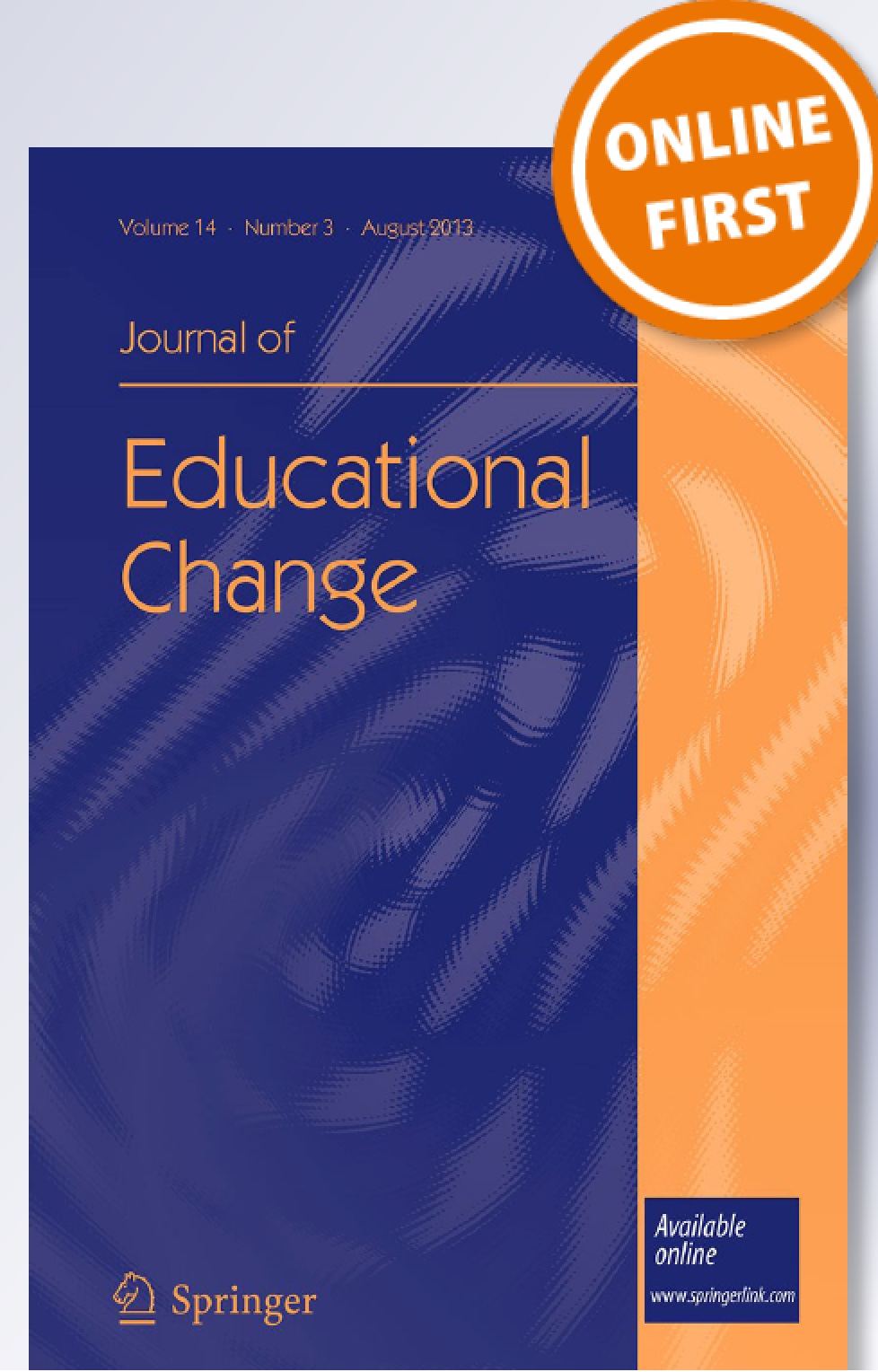
Introduction
- Medical research is a field education should emulate. Education researchers have been urged to adopt randomized controlled trials (RCT), a more ‘‘scientific’’ research method believed to have resulted in the advances in medicine. As a result, the RCT is now the gold standard in educational research. The What Works Clearinghouse as of 2015 accepts only studies using RCT as meeting its Group Design Standards without Reservations. The difference is that in education there is less effort to weigh the risks against their effectiveness. In medicine, even after a drug is approved, research on side effects continues.
What Are Side Effects?
- Side effect is defined as ‘‘an unwanted or unexpected result or condition that comes along with the desired effects of something.” In medicine side effects are expected and looked for. Studying and reporting side effects in trials has saved lives. Once side effects are known, effort is placed on finding treatments that are as effective with fewer side effects. In education, however, it is extremely rare to find a study that evaluates both the effectiveness and adverse effects of a product, teaching method, or policy in education. Don’t expect to see warnings like ‘‘this program will raise your students’ test scores in reading, but may make them hate reading forever” on any education product. The only people looking for negative effects in education are those that disagree with a product or policy.
Direct instruction: Instruction that stifles creativity
- Despite the vast amount of research, there is no general agreement whether direct instruction (DI) is an effective approach. Rather than continuing the argument between supporters and detractors of direct instruction, a more rational and productive approach would be for both sides to acknowledge that DI, like all medical products has effects and side effects. With direct or traditional teaching, students tend to do slightly better on achievement tests, but they do slightly worse on tests of abstract thinking, such as creativity and problem solving. When children are shown exactly how to do something, they are less likely to explore and come up with novel solutions. Students who receive instruction first tend to produce only the correct solutions they were told. It is possible for students to show high performance on memory tasks or carrying out problem-solving procedures without a commensurable understanding of what it is that they are doing. As educators we need both effective ways to transmit knowledge and foster creativity. Thus DI has its place. Its side effects, however, need to be minimized.
The best or the worst: The conflicting evidence of performance
- Due to their results on international tests, East Asian education systems have become the object of idolization and a source of ideas for improving education. These systems, however, have somehow made a large number of students lose confidence and interest in math, science, and reading, while helping them achieve excellence in testing. Yong notes that this evidence is still preliminary, but there is a negative correlation between test scores and confidence. The same trend is observed for the United States. If indeed the policies and practices that raise test scores also hurt confidence and attitude, we must carefully weigh the risks against the benefits. Do we care more about test scores or confidence and attitude?
When risks outweigh benefits: Test-based accountability
- America could have avoided the significant damages caused by test-based accountability if side effects had been taken seriously. High stakes testing has been associated with the distortion of instruction, turning teaching into test preparation, cheating, preventing some students from taking the tests, and narrowing of the curriculum among others. States and districts have manipulated drop out rates and misrepresented test results, and both teachers and students have been demoralized. All of this harm has not resulted in closing achievement gaps or improving achievement.
A call to study side effects
- There is no regulation that asks developers of education interventions to study and disclose potential side effects when providing evidence for their effectiveness. The focus, therefore is exclusively on marshaling evidence to show benefits and effects. Consumers only have information of what works, without knowledge of the potential costs. The negative effects of educational products, when occasionally discovered, are not considered an inherent quality of the product or policy. The collateral damages of NCLB could have been anticipated based on Campbell’s Law, which states: ‘‘The more any quantitative social indicator is used for social decision-making, the more subject it will be to corruption pressures and the more apt it will be to distort and corrupt the social processes it is intended to monitor.’’ Reported side effects are often brushed aside as lacking objectivity, scientific rigor, or motivated by ideology.
Recommendations
- 1. Research organizations and academic journals can require research articles to include both main effects and side effects.
- 2. Federal clearing houses such as What Works should include information about the negative effects of educational approaches, methods, products, or policies.
- 3. Education researchers, policy makers, and product developers should voluntarily study side effects and disclose such information.
- 4. Consumers of educational research, policy, and products should ask for information about both effects and side effects.
- 5. Program evaluation should include investigating both effects and side effects.
- 6. Reports of side effects after the implementation of interventions should be considered seriously, instead of discarding them as unintended consequences, improper implementation, or simply complaints by unhappy parents, students, or teachers. It is the responsibility of the policy and product developers’ to investigate and respond to such reports.
Yong Zhao
- Yong Zhao is a Foundation Distinguished Professor in the School of Education at the University of Kansas. He is also a professorial fellow at the Mitchell Institute for Health and Education Policy, Victoria University in Australia. He previously served as the Presidential Chair and Director of the Institute for Global and Online Education in the College of Education, University of Oregon, where he was also a Professor in the Department of Educational Measurement, Policy, and Leadership. His works focus on the implications of globalization and technology on education. He has published over 100 articles and 30 books, including Counting What Counts: Reframing Education Outcomes(2016), Never Send a Human to Do a Machine’s Job: Correcting Top 5 Ed Tech Mistakes (2015), Who’s Afraid of the Big Bad Dragon: Why China has the Best (and Worst) Education System in the World (2014), Catching Up or Leading the Way: American Education in the Age of Globalization (2009)and World Class Learners: Educating Creative and Entrepreneurial Students (2012). He is a recipient of the Early Career Award from the American Educational Research Association. He is an elected fellow of the International Academy for Education. Check out his website and follow him on Twitter @YougZhaoUO.
Posted in Book Summaries, Education Books, Leadership Books | Comments Off on What works may hurt: Side effects in education by Yong Zhao
Friday, September 2nd, 2011
When You Come to a Fork in the Road, TAKE IT: Inspiration and Wisdom from One of Baseball’s Greatest Heroes by Yogi Berra, with Dave Kaplan (©2001, Hyperon: New York, NY) is funny, insightful, and inspirational all at once. I have always been a big fan of Yogi as he seems like such an unlikely hero. He doesn’t look like a star athlete and at first, his speech doesn’t sound like it contains a lot of wisdom. He was the son of poor immigrants and dropped out of school after the 8th grade. In spite of this be became an MVP and winner of a record ten world series. He was a successful manager and many of his quotations have become known throughout our culture. As this book shows, they are not just amusing. The quotes along with Yogi’s philosophy contain a lot of wisdom mixed in with the humor. Many apply very well to the field of education as I try to show here. There are a lot of pages, but they are short and good.
When You Come to a Fork in the Road, TAKE IT!
- Throughout life you come to serious forks in the road – decisions. No matter what decision you make, taking a job, getting married, buying a house, whatever it is, you shouldn’t look back. Trust your instincts. I’ve always done things that feel right. Learn from the choices you make and don’t second guess yourself.
- On big life decisions get all the advice you can. Talk it over with parents, a mentor, a teacher, or a coach. They’ve had more life experience. They have more miles on them and can help you get on the right path. A teacher once asked me, “Don’t you know anything?” I said I don’t even suspect anything.
Enjoy The Moment
- Nobody can help but be nervous in the World Series or at a job interview, or giving a presentation, or when you’re called on in class. You have to channel that nervousness. Enjoy the moment and make it a great experience. You need to learn to relax. You can’t be afraid of making a mistake. There’s always the next inning or the next day. Life goes on.
Nobody Did Nothin’ to Nobody
- There were many times I had to help my teammates so that bad things didn’t happen. When you’re part of a team you stand up for your teammates. Your loyalty is to them. You protect them through good and bad because they’d do the same for you.
Tags: Yogi Berra
Posted in Book Summaries, Business Books, Education Books, Leadership Books | Comments Off on When You Come to a Fork in the Road, TAKE IT by Yogi Berra, with Dave Kaplan – Great for Educators & Parents
Monday, February 12th, 2018
When: The Scientific Secrets of Perfect Timing by Daniel H. Pink takes on the hidden science of timing and how it impacts our lives. There is solid advice here that applies all of us at work, in school, and in our leisure time. Be sure to get your own copy and consider giving one or more as gifts. Also see my summaries of Dan’s other fine books Drive: The Surprising Truth About What Motivates Us and To Sell is Human: The Surprising Truth About Moving Others.
Introduction
- We all know that timing is everything, but we don’t know much about timing itself. Our lives present us with a never-ending stream of when decisions. Rather than being a how-to book, this is a when-to book. For content, Daniel and two other researchers analyzed more than seven hundred studies in the fields of economics, anesthesiology, anthropology, endocrinology, chronobiology, and social psychology to unearth the hidden science of timing. Get ready for a lot of science.
Part 1. The Day – 1. The Hidden Pattern of Everyday Life
- This chapter focuses on our biological clocks or circadian rhythms. The research assembled here shows that about two-thirds of us are morning people (larks), while the rest are more productive later in the day (owls). There is a test here that can help you figure out which one you are. The message here for bosses and teachers is that the type of work or problems you expect workers and students to engage in should be dependent on their chronotypes and the time of day. No matter which type you are, you are likely to experience peaks and troughs. At the end of this chapter is the first Time Hackers Handbook. Each chapter has its own version. Here Dan discusses when to exercise based on your goals and tips for a better morning.
2. Afternoons and Coffee Spoons: The Power of Breaks, the Promise of Lunch, and the Case for a Modern Siesta
- There is a lot of research that shows that we perform worse just prior to lunch or near the end of the day. The answer is to take periodic breaks away from your desk. This is especially true for low performing students. Breaks should involve movement and detachment from your work or study. Having conversations about non-work topics with others helps as does walking outside.
- Although we often hear that breakfast is the most important meal, it is not well supported by research. There is evidence that how you do lunch can make a difference. Unfortunately, too many people eat lunch at their desks. Like other breaks, your lunch break should involve moving to somewhere else and detachment from your job. Naps are also an excellent way to ramp up productivity, but not just any nap will do. The optimum length is between ten and twenty minutes. One way to promote this is to take caffeine in some form prior to your nap. It won’t kick in for about twenty-five minutes so it will help you get back in the game. Innovative companies are creating nap spaces for their employees.
- The hackers handbook here offers advice for schools. 1. Schedule recess before lunch. 2. Don’t structure recess. Let kids negotiate it themselves. 3. Include mid-morning and mid-afternoon breaks where students move about. 4. Make sure teachers get breaks too. 5. Do not deny recess as a consequence of bad behavior.
Posted in Book Summaries, Business Books, Education Books, Leadership Books | Comments Off on When: The Scientific Secrets of Perfect Timing by Daniel H. Pink
